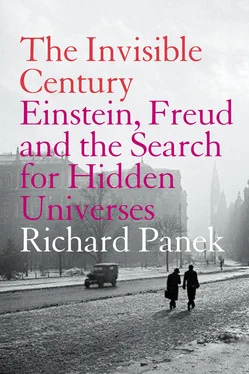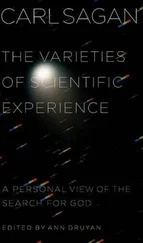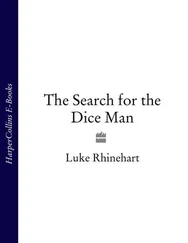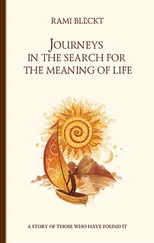It was entirely coincidence that Röntgen had conducted what proved to be his decisive research at the same historical moment, and possibly even the same literal moment, that the sixteen-year-old Albert Einstein was pacing the grounds of a school in Aarau, trying to reconcile the properties of a beam of light with the concept of absolute space. It was similarly a coincidence that Röntgen made his discovery on the very day that the thirty-nine-year-old Sigmund Freud was writing to his friend Wilhelm Fliess that he was thinking of abandoning his attempt to render human thoughts strictly in terms of the motions of neuroanatomic matter. But it was no coincidence that speculation about the implications of Röntgen’s discovery led in the same direction that Einstein and Freud were already heading.
If X-rays were a “longitudinal vibration in the ether,” Thomas Edison pointed out to a journalist visiting his New Jersey laboratory, “then Professor Röntgen has found out at least one method of investigating [the ether’s] properties, and the gain to men of science in estimating the behavior of light and electricity through the medium of ether will probably be immense, causing many changes in our present theories.” Meanwhile, Science magazine reported that the College of Physicians and Surgeons in New York City had used the rays “to reflect anatomic diagrams directly into the brains of advanced medical students, making a much more enduring impression than ordinary teaching methods of learning anatomic details.” And whatever went into a skull presumably could also come out: A Mr. Ingles Rogers informed a San Francisco newspaper that he had “produced an impression on the photographic plate by simply gazing at it in the dark,” while a Dr. Baraduc attracted worldwide attention by sending an official communication to the Paris Académie de Médecin that he had succeeded in photographing thoughts, and he mounted an exhibition in Munich as proof. Or, as one early account regarding X-rays cautioned readers who would fool themselves into thinking that if they “go inside the house and pull down the blinds and wait till it is dark,” they might “feel quite safe in sinning”: “There are the x-rays, you know—and nobody knows what other invisible pencils may be registering all our actions or even thoughts—or what’s worse, the desires that we don’t dare think. They, too, must leave their mark somewhere.”
Nobody knew quite what X-rays were—not even Röntgen, though he did tentatively guess that they might indeed be longitudinal vibrations in the ether. And nobody knew quite what X-rays did—though the medical applications were apparent enough that by the following autumn The New York Times reported “no hospital in the land can do justice to its patients if it does not possess a complete X-ray outfit.” And nobody could have known what impact X-rays eventually would have on the history of science—revolutionary, but that’s getting ahead of the story. What anybody who cared about science did know by now, though, following more than two centuries of investigation, was that in the properties of the ether or the pathways of the brain the scientific method had reached the frontiers of the outer and inner universes.
In which case: Was the store of knowledge finite? And if so, was the history of science now nearing its end?
The idea of science’s even having a history was a novel concept. History , in its modern interpretation, was still a fairly recent addition to Western thought. Before the dawn of the modern era of science, time had seemed—to the extent it had seemed anything—unchanging or, at most, cyclical. People lived and died; civilizations rose and fell. The particular circumstances of such a world might change, but not its essence.
Not so the essence of a world that placed a premium on the acquisition of new knowledge—on change itself. When Western scholars of the fifteenth century began resurrecting texts from antiquity and rediscovering ancient knowledge, they would have had no reason to believe that these sources were inaccurate or in any way incomplete. On the contrary: They had every reason to assume the texts they were inheriting were correct and comprehensive. Didn’t these writings, whether in the original Greek or in Arabic translation, represent the cumulative knowledge of a civilization at the zenith of its intellectual powers? True, that particular civilization had risen, and it had fallen. And true, civilization itself had lain dormant for the following thousand years. But the essence of civilization itself didn’t change: the understanding of the way the world works.
Yet that’s what the understanding of the way the world works was doing now: changing. Ptolemy of Alexandria, writing in the second century A.D., had compiled such a seemingly thorough catalogue of the workings of the heavens that some seven centuries later his Arabic translators honored his work with the title of “The Greatest Composition,” or Al-mageste (later shortened to Almagest ). Galen of Pergamum, also writing in the second century A.D., had described the human anatomy in more than a hundred texts that survived the ages, a volume of output that alone must have intimidated succeeding generations into accepting his word as gospel on all matters medical. Yet in 1610, Galileo looked through a telescope and determined to his own satisfaction that much of what Ptolemy had written was inaccurate, while in the 1630s Descartes surveyed the current state of medical knowledge and concluded, “I am confident that there is no one, even among those whose profession it is, who does not admit that all at present known in it is almost nothing in comparison of what remains to be discovered.”
So the acquisition of knowledge was only now just beginning, right? Wrong. Just ask Galileo. “It was granted to me alone to discover all the new phenomena in the sky and nothing to nobody else,” he wrote of what he’d observed through the telescope. Such was Galileo’s authority that his assessment was echoed, a generation after his death, by no less an eminence than Christopher Wren: “All celestial mysteries were at once disclosed to him. His successors are envious because they believe that there can scarcely be any new worlds left.”
Galileo, for once, had missed the point. No doubt his legendary arrogance contributed to his high opinion of his own accomplishments. So did the indisputably monumental and lasting nature of his additions to the astronomical and intellectual landscape. In the absence of a precedent for a single life’s work such as his, it might very well have seemed what Galileo assumed it to be: a self-standing anomaly, a onetime correction to the core of human knowledge—even, perhaps, its completion.
Put enough anomalies together, however, and that interpretation of a life’s work begins to shade in the direction that Descartes indicated. By the time Newton wrote in a letter to a friend in the 1670s that he had seen farther than his predecessors only because he was standing on the shoulders of giants, so many seemingly anomalous individuals had appeared in physics and astronomy that they were clearly no longer the exceptions but the rule. Through his choice of reference, Newton was indicating as much. He was paraphrasing the philosopher Bernard of Chartres, who in 1115 had written, “We are like dwarfs sitting on the shoulders of giants; hence we can see more and further than they, yet not by reason of the keenness of our vision, but because we have been raised aloft and are being carried by men of huge stature.” The cathedral then just beginning to rise in Bernard’s own village eventually commemorated this sentiment with lancet windows depicting New Testament preachers perching on the shoulders of Old Testament prophets, and it was this new interpretation of time that Newton, half a millennium later, was pointedly evoking: history as a cumulative enterprise, science as a cathedral of knowledge.
Читать дальше











